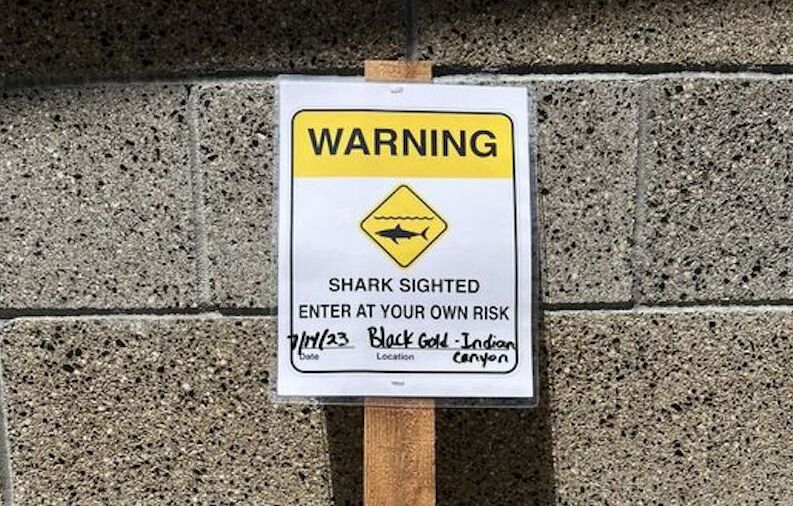Authorities in Southern California are sounding the alarm after lifeguards patrolling in the area reported seeing three juvenile great white sharks in the water.
In a statement on July 14, the San Diego Fire-Rescue Department said the sharks were feeding on the carcass of a sea lion and did not exhibit any aggressive behavior.
The department spotted the trio of sharks—estimated at about six, eight, and nine feet in length—while patrolling in a boat roughly 100 yards from shore at Blacks Beach shortly after midday.
“State lifeguards were notified because of proximity and signs were posted along the beach a mile in each direction from where the sharks were seen,” the statement reads.
“While these sharks were not exhibiting any aggressive behavior toward humans at the time of the sighting, lifeguards recommend exercising caution,” it added.
The advisory warning swimmers and surfers in the county comes about a week after New York officials deployed dozens of new drones in response to a slew of shark sightings and reported attacks across beaches in the eastern U.S. state.
At least five people, including two minors, reported being bitten last week in waters of some of New York’s most popular beaches, leading to heightened surveillance of the area’s coastlines.
Sharks in Southern California
A recent study from the California Department of Fish and Wildlife indicates that the shark bite rate has not increased in the state since the mid to late 1900s.
The agency reported 201 such attacks or encounters since the 1950s, with only 15 resulting in fatalities. However, the report noted that encounters have gone up by around 10 each decade since the 1980s, with 33 in the 2010s and 10 so far since 2020.
A study published by the California State University Long Beach Shark Lab in early June shows some beaches in San Diego and Santa Barbara almost always have great white sharks swimming near people.
According to the study, those in Carpinteria, of Santa Barbara County, and San Diego County’s Del Mar had the most encounters, where 97 percent of the time people were in the ocean near juvenile great white sharks, with at least five spotted on multiple days surveyed.
Researchers conducted the study using drone surveillance over the course of two years. They noted that the apex predators were often spotted very close to people, but they never witnessed aggressive behavior from any of the sharks studied.

White sharks in Southern California used to only frequent the beaches during summer when the water was warmer, but that has since changed as water temperatures rise, researchers told The Epoch Times.
“One of the cool things about this study was that we saw that it wasn’t just a couple of months, it was actually two years that they were at these beaches,” said Patrick Rex, a research field technician with the Shark Lab.
Mr. Rex said rising water temperatures create ideal living conditions for adolescent white sharks who can’t retain their body heat, and the shallow depths help them to avoid large predators.
Epoch Times reporter Rudy Blalock contributed to this report.

